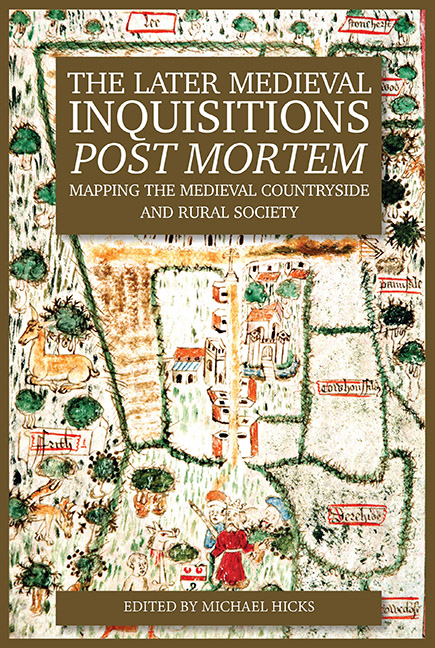67 results
Chapter 7 - Development of Assays to Diagnose COVID-19
-
-
- Book:
- Accelerating Diagnostics in a Time of Crisis
- Published online:
- 06 January 2024
- Print publication:
- 07 March 2024, pp 125-142
-
- Chapter
- Export citation
The Design and Operation of a New Relativistic Ultrafast Electron Diffraction and Imaging (RUEDI) National Facility in the UK
-
- Journal:
- Microscopy and Microanalysis / Volume 28 / Issue S1 / August 2022
- Published online by Cambridge University Press:
- 22 July 2022, pp. 2764-2765
- Print publication:
- August 2022
-
- Article
-
- You have access
- Export citation
In situ, broadband measurement of the radio frequency attenuation length at Summit Station, Greenland
-
- Journal:
- Journal of Glaciology / Volume 68 / Issue 272 / December 2022
- Published online by Cambridge University Press:
- 30 May 2022, pp. 1234-1242
-
- Article
-
- You have access
- Open access
- HTML
- Export citation
Modeling clinical trajectory status of critically ill COVID-19 patients over time: A method for analyzing discrete longitudinal and ordinal outcomes
-
- Journal:
- Journal of Clinical and Translational Science / Volume 6 / Issue 1 / 2022
- Published online by Cambridge University Press:
- 25 April 2022, e61
-
- Article
-
- You have access
- Open access
- HTML
- Export citation
Characterisation of age and polarity at onset in bipolar disorder
-
- Journal:
- The British Journal of Psychiatry / Volume 219 / Issue 6 / December 2021
- Published online by Cambridge University Press:
- 25 August 2021, pp. 659-669
- Print publication:
- December 2021
-
- Article
-
- You have access
- Open access
- HTML
- Export citation
Psychopathology and early life stress in migrant youths: an analysis of the ‘Growing up in Ireland’ study
-
- Journal:
- Irish Journal of Psychological Medicine / Volume 36 / Issue 3 / September 2019
- Published online by Cambridge University Press:
- 15 February 2019, pp. 177-185
- Print publication:
- September 2019
-
- Article
- Export citation
An intelligent algorithm for autonomous scientific sampling with the VALKYRIE cryobot
-
- Journal:
- International Journal of Astrobiology / Volume 17 / Issue 3 / July 2018
- Published online by Cambridge University Press:
- 25 September 2017, pp. 247-257
-
- Article
- Export citation
Recovery practice in community mental health teams: national survey
-
- Journal:
- The British Journal of Psychiatry / Volume 209 / Issue 4 / October 2016
- Published online by Cambridge University Press:
- 02 January 2018, pp. 340-346
- Print publication:
- October 2016
-
- Article
-
- You have access
- Open access
- HTML
- Export citation

The Later Medieval Inquisitions Post Mortem
- Mapping the Medieval Countryside and Rural Society
-
- Published by:
- Boydell & Brewer
- Published online:
- 26 May 2021
- Print publication:
- 21 July 2016
Contents
-
- Book:
- The Later Medieval Inquisitions <I>Post Mortem</I>
- Published by:
- Boydell & Brewer
- Published online:
- 26 May 2021
- Print publication:
- 21 July 2016, pp v-vi
-
- Chapter
- Export citation
Frontmatter
-
- Book:
- The Later Medieval Inquisitions <I>Post Mortem</I>
- Published by:
- Boydell & Brewer
- Published online:
- 26 May 2021
- Print publication:
- 21 July 2016, pp i-iv
-
- Chapter
- Export citation
Glossary
-
- Book:
- The Later Medieval Inquisitions <I>Post Mortem</I>
- Published by:
- Boydell & Brewer
- Published online:
- 26 May 2021
- Print publication:
- 21 July 2016, pp x-xii
-
- Chapter
- Export citation
List of Abbreviations
-
- Book:
- The Later Medieval Inquisitions <I>Post Mortem</I>
- Published by:
- Boydell & Brewer
- Published online:
- 26 May 2021
- Print publication:
- 21 July 2016, pp xiii-xiv
-
- Chapter
- Export citation
List of Contributors
-
- Book:
- The Later Medieval Inquisitions <I>Post Mortem</I>
- Published by:
- Boydell & Brewer
- Published online:
- 26 May 2021
- Print publication:
- 21 July 2016, pp ix-ix
-
- Chapter
- Export citation
Index
-
- Book:
- The Later Medieval Inquisitions <I>Post Mortem</I>
- Published by:
- Boydell & Brewer
- Published online:
- 26 May 2021
- Print publication:
- 21 July 2016, pp 215-226
-
- Chapter
- Export citation
List of Illustrations
-
- Book:
- The Later Medieval Inquisitions <I>Post Mortem</I>
- Published by:
- Boydell & Brewer
- Published online:
- 26 May 2021
- Print publication:
- 21 July 2016, pp vii-viii
-
- Chapter
- Export citation
Genome-Wide Meta-Analysis of Longitudinal Alcohol Consumption Across Youth and Early Adulthood
-
- Journal:
- Twin Research and Human Genetics / Volume 18 / Issue 4 / August 2015
- Published online by Cambridge University Press:
- 17 June 2015, pp. 335-347
-
- Article
-
- You have access
- HTML
- Export citation
Contributors
-
-
- Book:
- The Cambridge Dictionary of Philosophy
- Published online:
- 05 August 2015
- Print publication:
- 27 April 2015, pp ix-xxx
-
- Chapter
- Export citation
Contributors
-
-
- Book:
- Clinical Gynecology
- Published online:
- 05 April 2015
- Print publication:
- 23 April 2015, pp viii-xiv
-
- Chapter
- Export citation
The Murchison Widefield Array Correlator
- Part of
-
- Journal:
- Publications of the Astronomical Society of Australia / Volume 32 / 2015
- Published online by Cambridge University Press:
- 04 March 2015, e006
-
- Article
-
- You have access
- HTML
- Export citation






